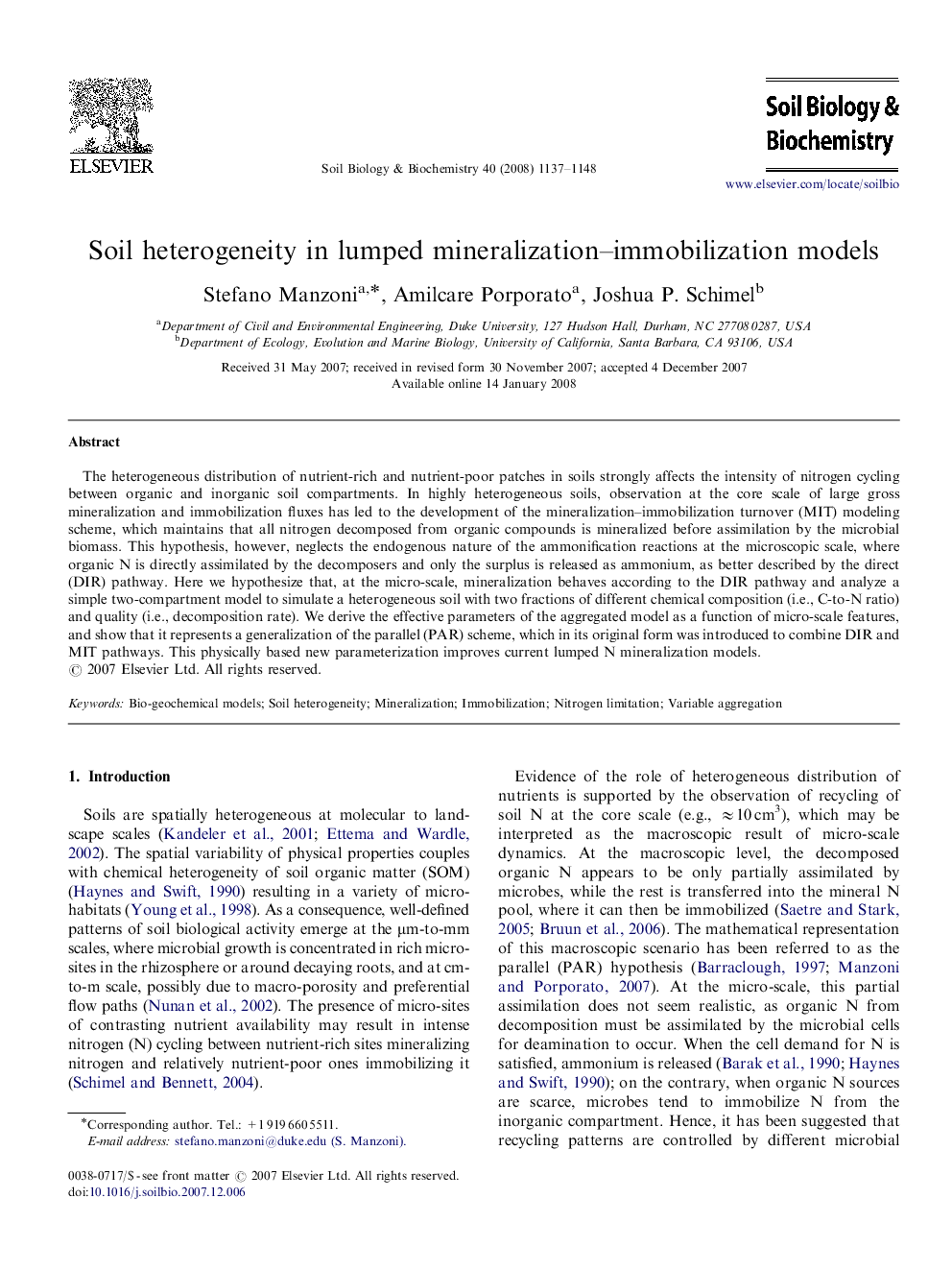| Article ID | Journal | Published Year | Pages | File Type |
|---|---|---|---|---|
| 2026029 | Soil Biology and Biochemistry | 2008 | 12 Pages |
The heterogeneous distribution of nutrient-rich and nutrient-poor patches in soils strongly affects the intensity of nitrogen cycling between organic and inorganic soil compartments. In highly heterogeneous soils, observation at the core scale of large gross mineralization and immobilization fluxes has led to the development of the mineralization–immobilization turnover (MIT) modeling scheme, which maintains that all nitrogen decomposed from organic compounds is mineralized before assimilation by the microbial biomass. This hypothesis, however, neglects the endogenous nature of the ammonification reactions at the microscopic scale, where organic N is directly assimilated by the decomposers and only the surplus is released as ammonium, as better described by the direct (DIR) pathway. Here we hypothesize that, at the micro-scale, mineralization behaves according to the DIR pathway and analyze a simple two-compartment model to simulate a heterogeneous soil with two fractions of different chemical composition (i.e., C-to-N ratio) and quality (i.e., decomposition rate). We derive the effective parameters of the aggregated model as a function of micro-scale features, and show that it represents a generalization of the parallel (PAR) scheme, which in its original form was introduced to combine DIR and MIT pathways. This physically based new parameterization improves current lumped N mineralization models.
